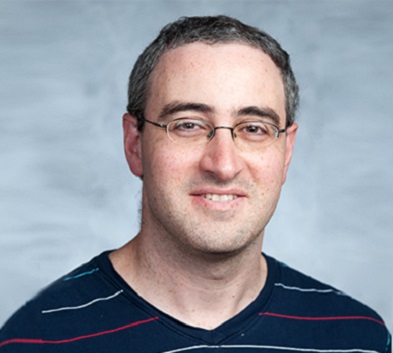Synergy between Abilities

What is the connection between a computational physicist in the Faculty of Engineering, to a laboratory that deals with experimental biology? Dr. Tomer Kalisky implements techniques for collecting and analyzing big data in the field of cancer research.
For Dr. Tomer Kalisky, Bar-Ilan University is an almost like home: "It's a welcoming and supportive environment, where it's fun to grow, and the relationship between people - between the lecturers and the students and the lecturers themselves - are very good. They are truly friends," he said. Thus, Kalisky, who originally studied to be a physicist, also found Bar-Ilan to be his real family. He met his wife, Dr. Beena Kalisky, while studying for his Ph.D. Today they both manage laboratories at Bar Ilan, Beena in the Physics department and Tomer at the Faculty of Engineering. The couple has three children. Tomer's parents were also scientists by training. His father, Dr. Yehoshua Kalisky, is a retired chemist from the Defense Ministry, and his mother, the late Dr. Ofra Kalisky, was also a chemist and manager in industry.
What is the connection between a computational physicist in the Faculty of Engineering, and a laboratory that deals with experimental biology? "One of the things that has always interested me in physics is, on the one hand, the transition from micro to macro - how a system made up of many small particles takes on complex collective properties as a whole, and on the other hand, the ability to obtain large amounts of information from a complex system and discover its underlying rules," he said. "After completing my doctorate, I wanted to apply the knowledge and computational abilities I had acquired to the field of biology, which seemed to me to be very much in need, since data collection technologies had greatly advanced, but the ability to analyze the data quantitatively and mathematically was lacking. So I made a very sharp transition from computational physics to experimental biology. I did a postdoctoral fellowship with Prof. Uri Alon at the Weizmann Institute, and then I flew to Stanford University to Prof. Stephen Quake's laboratory, and over five years, I learned how to conduct biological experiments."
Dr. Kalisky's laboratory focuses on single-cell genomics, with the goal of identifying and characterizing cancer stem cells. "When it comes to detecting and healing cancer, we're actually looking for a needle in a haystack. Most cells in a tumor are usually not dangerous. The cancer stem cells - the most dangerous cells, are a small minority, which - and only those - we want to locate and destroy," explained Dr. Kalisky. "Stem cells, by definition, have the ability to self-regenerate. Therefore, this is a very complicated disease. A surgeon can remove the tumor, but if he leaves even a few microscopic cells, after a while the tumor will return. So molecular therapy is also needed, i.e. a substance that travels through the body, searches for and destroys all cancerous stem cells. The problem today is that in most cases conventional treatments - chemotherapy or radiation - are not focused on these cancer stem cells, but rather kill all dividing cells in the body. This particularly affects the hair, the blood, the immune system, the intestine, and the skin - and this is why cancer patients suffer from side effects during treatment."
"What we are trying to do in our laboratory is to locate and find markers for cancer stem cells. We take the tumor, divide it into the thousands of cells that it is composed of, and produce the genetic material from each of these cells. A vast database of 25,000 genes per cell, multiplied by several thousand cells, is obtained from this process. With this database, we use machine learning algorithms to find the cells that have stem cell properties, that is, cells that activate genes related to self-regeneration. The fact that we are in the Faculty of Engineering enables us on the one hand to develop these technologies for collecting thousands of individual cells, and on the other hand, to develop computational algorithms to handle large amounts of information - Big Data."
Dr. Kalisky's laboratory works in close collaboration with Professor. Benjamin Dekel, head of the Institute for the Study of Pediatric Stem Cells at Sheba Medical Center, Tel Hashomer, and Dr. Achia Urbach of the Faculty of Life Sciences. Together they are working on understanding how a kidney forms during the fetal stage, in an attempt to understand how improper development in the fetal stage leads to pediatric tumors. "Just recently, using a new technology called Single Cell RNA Sequencing, we succeeded in performing full genetic sequencing of all of the RNA molecules of about five hundred individual cells in a fetal mouse kidney. This was a technological challenge that took a long time, and this breakthrough can provide us with a snapshot of the developing kidney at a much higher resolution than could have been observed until now." This collaboration of three researchers has led to a number of academic articles which are in various stages of publication. A first report was published in the past year in the prestigious journal Scientific Reports. Another article was recently accepted for publication in the journal Stem Cell Reports. In his laboratory, Dr. Kalisky has been guiding students in various fields – including physics, mathematics, engineering, and biology. "In my group, I always try to mix between the different fields, so that each student learns from the others, while also expressing his or her relative advantage. Thus we obtain a synergy between the various abilities in our group.
Last Updated Date : 06/09/2017



